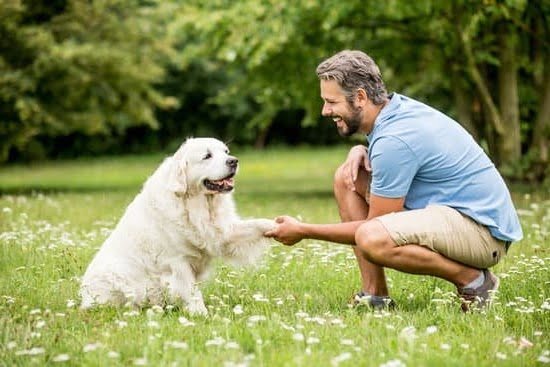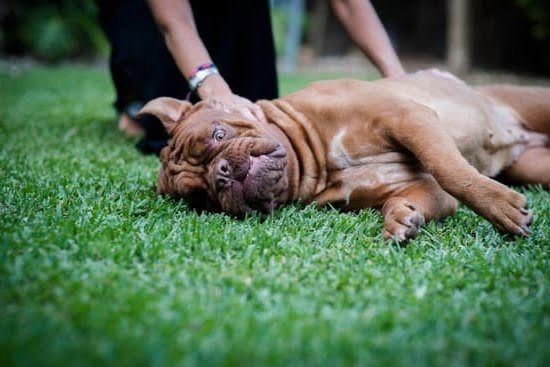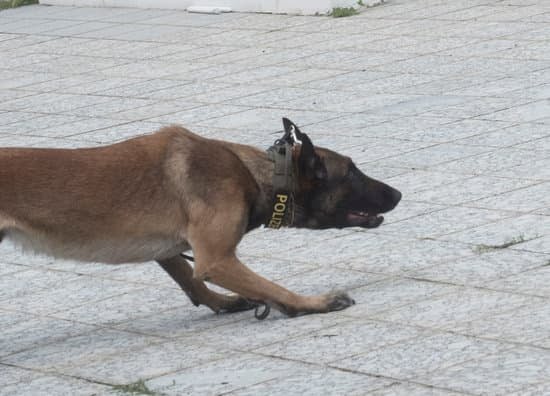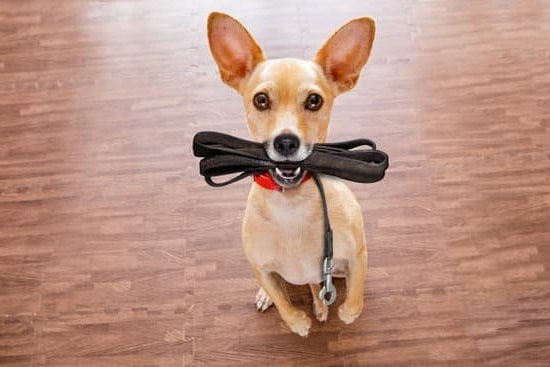Introduction
Scent training, sometimes referred to as nose work or scent detection work, is an important activity for dogs. Training a dog’s sense of smell can help give them an outlet for their natural drive to explore, hunt and use their impressive sense of smell to complete tasks successfully. It also helps satisfy their instinctive desire to learn new things and be rewarded for the effort. Furthermore, scent training provides physical and mental benefits that are part of overall well-being. Research shows that this form of canine enrichment can significantly reduce stress levels in some breeds of dogs.
Additionally, there are numerous practical benefits associated with scent training. It is a great way to improve a dog’s obedience skills by using positive reinforcement methods that focus on reward-based motivation. Scent training activities also help dogs stay engaged and active when it comes to retrieving objects like toys or small items presented during the lesson. Finally, many owners find that teaching dogs scent games leads to improved obedience behaviour such as staying focused while walking or responding more quickly and accurately to verbal commands in distracting environments. All in all, investing the time into scent training your pup offers tremendous rewards – both literal and figurative!
Uncovering What Goes into Scent Training
Scent training for dogs can be one of the most beneficial activities for pups, offering them mental stimulation, physical activity, and fun. Starting out, there are a few things to consider that will ensure success in scent training.
The first thing to consider is what kind of product you wish to use in your training sessions. Different items such as scented plastic discs or food treats can provide different challenges and rewards for your pup. When it comes to products and tools, it’s important to determine which ones will set their nose into overdrive – but also won’t cause any harm if ingested.
Once the right products have been chosen, a training plan needs to be created. The desired goal should be something achievable; this will help keep pup’s interest high throughout the process and provide positive reinforcement when they exceed expectations. Different ways you can achieve better results include controlling where the scents are placed during an exercise session and following a consistent routine each time you train together.
Finally, preparation plays an important role in successful scent training sessions with dogs. Before beginning any session, make sure both pup and owner are ready. Spend some quality time playing games like fetch or tug before starting so that pups really focus in on what scent they are looking for during the session itself. Keeping pup’s confidence up with verbal affirmation or treats is beneficial too; this type of feedback increases motivation for finding future scents throughout future sessions as well!
Ensuring Dog Safety During Training
Ensuring Dog Safety During Training: It is important to ensure that your dog is safe throughout the scent training process. When approaching a new agility or scent training exercise, always make sure that your dog has been taught proper body language and commands in order to complete the task safely. Have your dog on a leash while introducing any exercises, and be aware of potential triggers or distractions such as other dogs, loud noises, and people. Building an environment of trust between you and your dog includes safety precautions.
Component Safety Tips: In order to make sure that every attempt for success is successful for you and your pup, consider implementing these tips when beginning scent training:
– Make sure the agility course is clear from obstacles to prevent possible injury.
– Familiarize yourself with necessary commands so you can review them periodically with your pup.
– Provide positive reinforcement at the end of each successful stage for effort & hard work involved.
– Slowly introduce new components as needed in order to maintain spike behavior and engagement levels.
Rewards Based Methods: Using rewards based methods will maximize successes and establish a connection between yourself and pup while introducing scents! As you begin scent training with rewards based methods, consider these steps: Start by reading out all key smells and locations out loud one by one, lead by example by demonstrating where the desired location or smell is located within space given After location / smell has been identified and accepted successfully reward your pup with treats or verbal praise Repeat this process with each desired location/smell until all key smells/locations have been learned!
Introducing New Exercises: Introduce new exercises gradually yet consistently as a commitment for success for both you & pup! Increasing difficulty level gives opportunity for both owner & pet to discover what works best in terms of shape formations needed during same exercise This will also help enhance understanding between owner & pet such as interpreting “yes” versus “no” signals given by trainer Be mindful of pace at which exercises are introduced keeping patience & attentiveness important factors throughout transition to better improve stimulation levels Finally provide spot corrections once pup completes multiple stages throughout duration of exercise testing learning capabilities
Creating and Utilizing Reward Systems to Reinforce Training
Beginning scent training for dogs is an important part of ensuring that your dog will respond to commands given by you. To begin scent training, the first step is to create a reward system that your dog can easily identify and understand. This rewards system should include both verbal and nonverbal cues that you reward your pet with each time they complete a task correctly. Consider providing treats, clicks, hugs and/or favorite toys when training.
When it comes to creating a great reward system for your pet, food is usually the most popular option as it will be easier for your pet to identify quickly. However, other rewards such as toy-play and outdoor activities should be considered in order to engage your dog with fun activities which they can look forward to. Toys could range from scatter feeders which hide small pieces of kibble or treats around the room or tug toys which allow you and your pet to play together – both of these activities may offer some entertainment! Moreover, consider going outdoors for walks or playing fetch in an open space as a way for your pup to exercise and get active.
This type of reward system is not only important for successful scent training but also beneficial for strengthening the bond between owner and pet. With exciting activities alongside positive reinforcement, it will make teaching new commands much more enjoyable – both for you and your pup!
Ways to Introduce Scent Training to Your Dog
Scent training for dogs is a challenging and rewarding experience for pet owners. Just like other types of training, it requires consistency and dedication so that your pup can pick up scent patterns quickly and accurately. It’s important to introduce the task gradually with short sessions each day in order to ensure your pup can maintain focus and stay motivated throughout the process—and get the most out of their scent-related activities.
To start, it may be helpful to use treats or toys with strong scents as incentives for your pooch. Before beginning scent training lessons, make sure to begin socializing your puppy with the various smells so they become familiar with them and not afraid or uncomfortable. Additionally, always use positive reinforcement such as verbal praise or treats when your pup completes a successful task —this will help encourage them and make them more eager learn.
Once you feel confident enough, you can go on to try some more complex exercises like using multiple scents at once or introducing elements of competition by hiding treat in various locations for them to find. Additionally, remember patience is key—it can take time for pups to learn how to properly identify odors but over time they will come along as long as you provide proper guidance and encourage their progress!
Tips for a Successful Scent Training Program
•Start by introducing familiar scents first. Allow your dog to investigate and explore the scent without interruption or further instruction. Let them draw their own conclusions and form their own understanding.
•Provide lots of positive reinforcement for successes, even if they are small or incremental. Appreciative feedback goes a long way with dogs, as they love to be praised for a job well done.
•Be mindful of potential distractions during training sessions and adjust the environment accordingly. For example, you might want to hold scent training exercises in a quiet space away from other animals, people, and objects that can divert your pup’s attention away from the task at hand.
•If your dog is having difficulty detecting scents and responding properly, consider switching up the order in which you introduce various odors or adjusting the placement of objects around the room to make searching easier. Or try shortening the duration of your scent activities, slowly increasing it over time as your dog gets more comfortable and skilled at recognizing different smells.
•The use of rewards such as treats or toys can help maintain focus during stressful situations where distractions may arise – this creates positive associations between scents and rewards that will help keep your pup motivated throughout their training program.
•If you are still experiencing difficulty breaking through any roadblocks in your dog’s scent training program, consulting with a licensed trainer or animal behavior expert is always an option to ensure success – these professionals have years of experience helping dogs become better sniffers!
Celebrating and Reinforcing Progress
Celebrating and reinforcing progress is an essential part of beginning scent training for dogs. It helps to show the dog that what they are doing is correct, thus reinforcing positive behavior. To effectively celebrate and reinforce progress, the owner should look for small wins to reward their pup with verbal praise, treats or toys. Additionally, tracking a pup’s progress regularly can allow the owner to see how well they are learning along with identifying areas where their pup needs more help. This can be done by keeping track of the cues and commands that have been used in each session with whatever works best for the individual pet – such as a notebook, a smartphone app etc… Lastly, if any signs of regression happen during scent training sessions it is important that owners monitor this closely so appropriate corrections can be made if necessary.
Conclusion
Scent training for dogs is an effective and fun way of increasing their level of alertness, enhancing their natural ability to find lost items, and teaching them positive habits. It helps to nurture mutual trust between humans and their pets, as well as develop a more fruitful relationship. Additionally, scent training serves as an engaging activity that allows dogs to play in a safe and stimulating environment and can help alleviate stress from the strenuousness of obedience training. Furthermore, it provides a great opportunity to bond with your pet, build character in them and explore a new area of study all together. With regular practice and guidance from experienced trainers or classes, dogs can master this skill quickly – creating sustainability for years to come.

Welcome to the blog! I am a professional dog trainer and have been working with dogs for many years. In this blog, I will be discussing various topics related to dog training, including tips, tricks, and advice. I hope you find this information helpful and informative. Thanks for reading!





